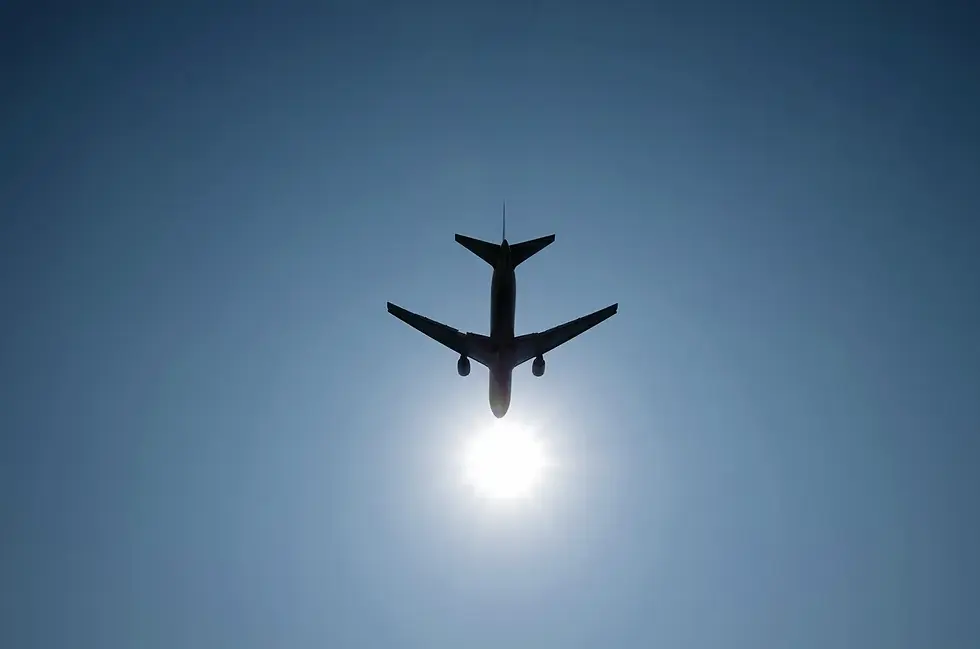Four breakthroughs in zero emission aviation
- Matthew Scott
- Jun 3, 2021
- 3 min read
What's the most exciting thing happening in the world of electric vehicles? Aircraft. This blog, my tweets, and my IG feed are pretty focused on electric cars. I converted my back yard into a charging station, recycled my old gas car, and now I drive our electric Kona around with a pretty ridiculous grin on my face. The auto industry is changing incredibly quickly, and the amazing electric pickup trucks on the way will accelerate that change. But the electric revolution is also rippling through the aviation sector, in at least four waves:
1. Retrofit of older aircraft designs MagniX and Pipistrel have both taken traditional high-wing, propeller-powered light aircraft and fitted electric motors and batteries. MagniX retrofitted a De Havilland Beaver (2019) and a a Cessna Caravan (2020) with their powerful 750 horsepower electric motor. The result was quiet operation and zero emission but limited range. These two classic designs are not designed for modern components. Pipistrel optimised a smaller electric motor on their Alpha Electro to their 2-seat trainer airframe, similar in dimensions and capability to a Cessna 150, one of the most widely used two-seat training aircraft in history. The results are a training aircraft with impressive climb ability, low vibration and noise, but only about an hour of flight time. These are a bit like custom car shops that have been putting batteries in VW bugs for a few years. It's cool, but definitely pricey, and the MagniX aircraft are one-off collector items designed to show off what electric motors can do. With aircraft - even more than cars - a clean-sheet design for the electric energy systems is a better, less compromised approach.
2. Scaled-up Drones eHang or Volocopter effectively make big drones that fits people. These small craft use lots of little propellers for vertical lift like a drone, and are usually autonomously or sometimes remotely piloted. They are focused on short urban hops for 1-2 passengers, competing against current-day helicopters. Having a lot of these buzzing over city streets doesn't thrill me, but they are cool and flying today already.

3. Winged vertical take off and landing aircraft I find these the most exciting wave as they can skip congested airports like drones can and take passengers closer to their destination. But adding wings results in far higher cruising speed, longer range, greater safety, and better energy efficiency than drone-based designs. A payload of more than two people also expands their use to charter or taxi applications, and a wider customer base. Lilium and Joby have some impressive craft in the air already that could seriously disrupt the mid-ground aviation sector.

Each of these first three waves have have proven their performance, have strong market forces behind them, and will revolutionise aviation in their own way. But they are still limited to small passenger loads compared to airliners.
4. Zero emission Airliners Don't hold your breath on this one. These need, well, a bit more runway to get their zero emission plans into the air. Airbus has committed to develop the world's first zero-emission commercial aircraft by 2035. Notice they say "develop" not "put into regular passenger service", and that's still 14 years away at best. Boeing is even less ambitious, pledging simply to fly current designs on 100% sustainable fuel by 2030. Bringing zero emissions to commercial long-haul aviation would make the biggest difference to the greenhouse gas emissions of a frequent traveler like me. I averaged about 170,000km/105,000miles of air travel a year before COVID-19, which is a lot of CO2 and other environmental waste.

So there's some pretty amazing electric aviation happening over our heads, even though these are small-scale solutions. Bottom-up might be the way for planes to go electric, just as it was for cars. Tesla started by transforming the passenger car market, and is launching pickups and soon big-hauling commercial trucks. Aviation may be following a similar pattern.
But as battery technology continue to leap ahead in terms of lower costs and higher power-to-weight ratios, there is good reason for green tech nerds to look to the electric skies with hope.
p.s. Full disclosure: green tech nerd is also an aviation nerd. (I got my commercial pilot's license in 1993.) I still love all things aviation but I don't love the fossil fuels that power it. Even though burning aviation fuel only accounts for about 2.5% of global greenhouse gas emissions, the high-altitude burning of massive amounts of kerosene contributes another 2.5% of effect toward global warning. We can and should do better.








Comments